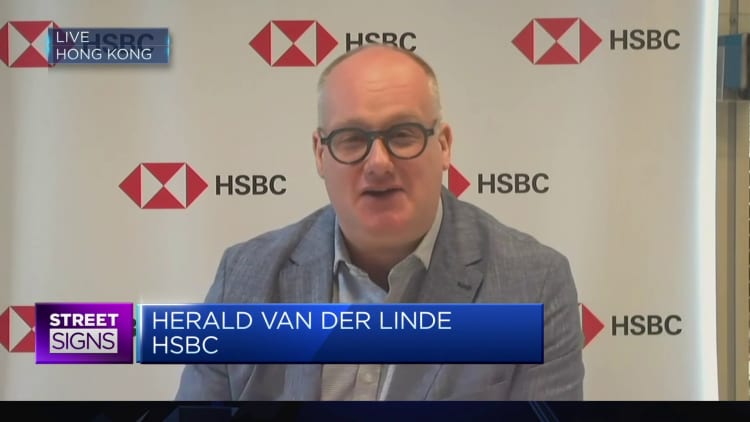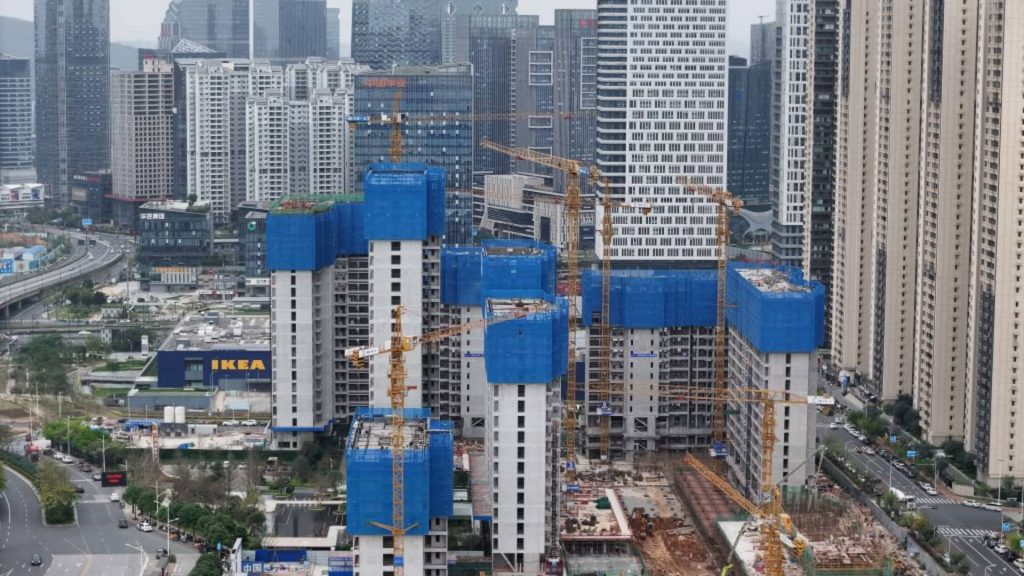Pictured is a commercial residential property under construction on March 20, 2024 in Nanning, the capital of Guangxi Zhuang Autonomous Region in southern China.
The Future of Publishing | The Future of Publishing | Getty Images
BEIJING — China’s fiscal stimulus is losing its effectiveness and is more of a strategy to buy time for industrial and consumer policies, S&P Global Ratings senior analyst Yunbang Xu said in a report Thursday.
The analysis used government spending growth to measure fiscal stimulus.
“In our view, fiscal stimulus is a strategy that could bring some long-term benefits if projects are aimed at reviving consumption or upgrading industries that add value,” Xu said.
China has set a GDP growth target of about 5% this year, and many analysts have called the target ambitious given the level of stimulus announced. The head of the country’s main economic planning agency said in March that China would “strengthen macroeconomic policies” and enhance coordination among fiscal, monetary, labor, industrial and regional policies.
The S&P report said high debt levels limit the amount of fiscal stimulus a local government can undertake, regardless of whether a city is considered a high- or low-income region.
Government debt as a share of GDP can range from about 20% in the high-income city of Shenzhen to 140% in the much smaller low-income city of Bazhong in southwestern Sichuan province, the report said.

“Given fiscal constraints and declining efficiency, we expect local governments to focus on cutting red tape and taking other measures to improve the business environment and support long-term growth and living standards,” S&P’s Xu said.
“Investments are less effective against the background [the] a sharp slowdown in the real estate sector,” Xu added.
Fixed investment for the year accelerated in March compared with the first two months of the year, thanks to an acceleration in manufacturing investment, according to official data released this week. Infrastructure investment slowed and real estate investment fell further.
Earlier this year, the Chinese government announced plans to support domestic demand with subsidies and other incentives for equipment upgrades and the exchange of consumer goods. Officially, these measures are expected to allow more than 5 trillion yuan ($704.23 billion) to be spent annually on equipment.
On the financial front, officials told reporters last week that the central government would provide “strong support” for such upgrades.
Based on data from 2020 to 2022, S&P found that local government fiscal incentives were generally larger and more effective in wealthier cities.
“Higher-income cities have an advantage because they are less vulnerable to downturns in real estate markets, have a stronger industrial base, and their consumption is more resilient to downturns,” Xu said in the report. “Industry, consumption and investment will remain key drivers of growth in the future.”
“High-tech industries will continue to drive China’s industrial upgrading and drive long-term economic growth,” Xu said. “However, excess capacity in some sectors could trigger pricing pain in the near future.”


